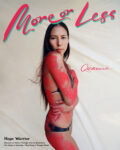It was in mid-March, as the virus tore through Europe, that the images first started to appear: swans and dolphins swimming in Venice’s deserted canals, the formerly dead grey waterways suddenly clear and crystal blue; wild boar trotting down empty roads under empty skies; elephants frolicking in tea fields drunk on corn wine, as if in celebration. “Nature hit the reset button on us,” read one of countless viral tweets. The sentiment, that “nature is healing”, soon became a meme. Deaths mounted and funeral parlours overflowed, key workers in home-made masks and bin-bag smocks risked their lives while the rest of us clapped from our doorsteps, yet there was nonetheless a sense, at least on social media, that something profound, even good, was happening. Global greenhouse-gas emissions fell to their lowest level in years, as factories and airports shut down across the world. Cities from China to the United States reported dramatic increases in air quality. Streets, empty of traffic, instead filled with cycle paths and open-air dining. Families flooded the parks. The “nature is healing” tweets were more than a meme: they captured a moment, a sensation, that amid the grief and loss of the pandemic was a kind of correction. A second chance.
I certainly felt it. Lockdown was a shock, but as the weeks went on my family settled into a kind of rhythm. The town where I live is edged by a rolling heath, a series of low hills crowned by a long thin stretch of woodland. Every day my two-year-old daughter and I would wander up and away from the news cycle and into the forest. We’d climb on logs and learn about trees: buckthorn, beech, sycamore, how to tell nettles from garlic mustard. She fell in love with ladybirds, chased butterflies, grew to know the fanned tails of red kites and the staccato thrum of woodpeckers. Now and then our little idyll was pierced by the sound of ambulances rushing towards the nearest hospital. But other than that, I feel guilty to admit, for those early few weeks our pandemic was almost idyllic.
I’m aware, of course, that just like the “nature is healing” meme, our experience was loaded with privilege. For countless people trapped indoors in high rises away from nature, unemployed or furloughed – or worse, stuck in factories and Amazon warehouses (the chronically mistreated suddenly rebranded as essential) the pandemic has been devastating. Its burden has overwhelmingly fallen on the poor, while the rich have got richer. But for a brief few weeks, it really did feel like something was healing. Perhaps it was nature, perhaps it was us.
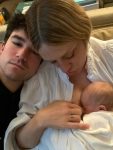
“Giving birth during the pandemic made me profoundly aware and grateful for all I have. A loving partner. A strong support system of friends and family. And most importantly, health insurance provided by my union. Healthcare is a basic need which should be available to everyone.”
Chloë Sevigny, actress

“This past spring, New York City was brought to its knees by the first wave of the ongoing Covid-19 pandemic. Elmhurst Hospital Center, in the borough of Queens, was the epicentre of the outbreak and had dedicated more than 95 percent of its operations to caring for Covid-19 patients. Clinicians at the hospital said they had never seen anything like it and compared the situation to being at war. In response to this devastating reality and inspired by a similar initiative for the Pope John XXIII Hospital in Bergamo, Italy, a small group of New York creatives came together to organise a fundraiser print sale that we called Pictures for Elmhurst. We launched on 10 April with work from 96 New York-based artists, expanded with 91 artists from around the world on 16 April, and by the end of the fundraiser on April 20 had raised 1.38 million dollars for Elmhurst Hospital Center. This result blew away even our wildest imaginings. In such dark times it was truly, deeply heartening to witness such an outpouring of support from our photographic community. As the team at Elmhurst Hospital Center said at the time, ‘lives will be saved and staff will be protected and supported through this work’. There are no words to express how proud and appreciative we are of our community and their generosity, compassion and solidarity.”
The Pictures for Elmhurst team: Matthew Booth, Samantha Casolari, Eliona Cela, Vittoria Cerciello, Stefan Dufgran, Shayna McClelland and Jody Rogac

“The Happier Times Are Coming charity T-shirts were initially free posters made as a reminder for myself and others who may feel sad, lost or alone right now, or for any time in their life. It’s optimistic, but also a realistic message too. A father contacted me asking if he could send the poster to his teenage son who suffers with anxiety and had been suffering recently. He was in much need of positivity from any sources. Receiving messages from parents like these led to a collaboration with Les Girls Les Boys to help spread the message and make the poster into charity T-shirts. UK Youth supports young people by helping them to thrive and empower them at every stage of their lives. With the continuous closures of youth centres over the years, there is nowhere for under 18s to hang out with their friends. Community and a sense of belonging is important for any social development, and for growth in confidence too. UK Youth provides a platform for the development of crucial everyday life skills. All proceeds help to support this. I never imagined something so small and spontaneous could end up having such an impact on people. I’m extremely grateful to everyone who has helped share the message and raise awareness.”
Seana Redmond, art director
As lockdowns ease – and the virus flares up again– everyone is asking the same question: when can things return to normal? But of course the very word normal is an obsolete concept now. Once they cross into people, zoonotic diseases don’t disappear. Pandemics move like wildfires, fires that flicker and die and smoulder where we can’t or won’t look, then ignite again when our vigilance wavers. Until there are cheap, effective vaccines for Covid-19 available everywhere in the world, life cannot return to our old ways – nor should it. The same realisation applies to climate change. No matter the horror we’ve felt this year at the actual wildfires burning in the Arctic Circle or Australia or California, we somehow still haven’t grasped that this is just the beginning, that the fires will only get hotter and more frequent. In August, California experienced the hottest surface temperature in recorded history– 54.4°C – and yet we all know that record won’t stand for long. As I write this, soot and ash is blocking out the sun in San Francisco. Normal means consistency, and consistency is not compatible with a warming world.
The question now, then, isn’t how we return to normal, but about how we reorient ourselves to navigate a world that will never quite be as it was before. That’s especially true for the fashion industry. Inevitably, the coronavirus has been catastrophic for a business that still generates nearly 80% of its revenue from physical stores. In April, clothing sales in the US fell by 79%, the largest ever drop on record. Major brands like J Crew and Brooks Brothers filed for bankruptcy. Many more, including Gap, defaulted on their rents. According to analysis by McKinsey and The Business of Fashion, even with some recovery the majority of fashion brands will be in serious financial distress by the end of 2021. Fashion weeks, already declining in relevance as more major luxury brands embrace digital-first showings, have been cancelled or moved online; at the time of writing it seems likely that the September shows will be a shadow of their former selves. Burberry has said it will show without an audience, prioritising the digital experience.Virgil Abloh has said he will no longer show on a seasonal basis. Gucci has cut its catwalk schedule from five shows to two. With most of us staying home – and set to do so into next year – due to the virus, there’s no market for soft-shouldered blazers or riotous couture. The world will look different from now on; it will also dress differently.

“Living in France as a New Yorker has been fun the last year. Leaving the Big Apple behind in 2020 to live in the pastry paradise of the world hasn’t been bad. I gave up the Rockaways for Marseilles, chopped cheese deli sandwiches for butter and baguette; although I miss a strong bacon, egg and cheese sandwich, things aren’t bad. The magic spark of living in Paris often pops up at a street corner here and there or while riding a street scooter along the Seine, watching the sun set, letting the breeze hit my lips. However, with all the new customs, New York is something I carry with me everywhere I go. I’m happy with my decision to escape America and start a new life in Paris, France. La vie belle”
Joshua Woods, photographer

“I’ve always doodled and lockdown became a period where I could really devote time to it, and I found myself more and more involved. I find the process quite peaceful. Time can disappear when I’m drawing; also, compared to photography, it allows me to be truly silly and playful without being too precious about the final result. I’d love to keep time each day to continue. Eventually I’d like to make a surreal A-Z in time for when our first child grows up.”
Jack Davison, photographer

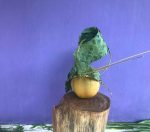
“Randomly, I was with my family in Costa Rica when the virus kicked off. In a moment of uncertainty, we decided to stay and ride it out until it gets better. There has been so much heaviness in the last few months, but the time with my family and being in a setting to be playful and creative has been what I was missing. I don’t have my tools here. I don’t have any guide lines or directions. I just satisfy my time by using my hands to create and play. It could be weaving a palm on a walk, or making garlands for Earth Day. I also carved out time to work on my different normal projects each day which keeps me very busy, but I always make the time to watch the sun rise and set. My biggest take away from this time is having less and living more, the balance of work and play, and the time I have shared with my family.”
James Pecis, hairstylist
That’s not necessarily a bad thing. As with nature returning to our streets, the impact of the virus on the fashion industry is a wake-up, a reminder that so much of how clothing has operated in the last decade– fast fashion, a reliance on environmentally and socially damaging materials and manufacturing –can’t and shouldn’t last. “We went way too far, wrote Gucci’s creative director, Alessandro Michele, of his decision to ditch the fashion schedule and slim down collections, explaining that the “outrageous greed” of the existing system has caused the industry to “lose the harmony and the care, the connection and the belonging” with the natural world.
The pandemic has also an opportunity for fashion to come together, to understand again why we dress, what the overused word essentials really means in a time when the greatest luxury is staying alive. When the first wave came, fashion found itself unexpectedly on the front lines, with Burberry, Prada, LVMH and Kering all turning their European production lines to making face masks. Whatever the new normal looks like, we can only hope that spirit endures.
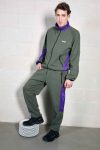
“We have tons of clothes that kids want to buy, so it made sense to do a big sale to raise some cash for Beirut. Me and some other skaters donated our old threads for this charity sale and raised £5,080.60 for Beit El Baraka, a charity which provides economic support for the people of Lebanon.”
Rory Milanes, skateboarder

“This photograph was shot in Lebanon in the pool of the country club where my family have been members since way before I was born. It’s called ATCL and we all meet there at some point in the summer every year. It is located by the sea and has a beautiful view of the mountains. It’s a peaceful club and I have some of my best memories there. This summer was very different, though, as a devastating explosion hit my homeland on 4 August and has left us heartbroken. Since the catastrophe I teamed up with a group of creative friends and set up a charitable online shop to raise funds to help Lebanon. It’s called Beirut Re-Store. It will offer a curated selection of art and design objects, as well as fashion items graciously donated by renowned artists, to help the Lebanese people survive and rebuild Beirut. We are associated with a non-profit organisation called LIFE which will be donating 100 percent of the funds to the vetted NGOs Lebanese Red Cross, Lebanese Food Bank, Beit El Baraka, Arcenciel and Ya Byout Beirut. The country still needs so much to get out of this mess and I am positive that we will do so.”
Emilie Kareh, stylist

“I enjoyed spending time with my family and, of course, having more time to be creative. Additionally, art-history class was a wonderful outlet from grief and fear. A bonus was falling in love with Robert Mapplethorpe.”
Annie Morton, photographer
There are, mercifully, signs that it may. While much of the world has tried to settle back into its old rhythms, many of the positive changes we’ve seen during the pandemic may linger: cities like Milan have announced that the pedestrianisation of the city centre will continue after the pandemic. Many companies have now adjusted to remote and flexible working. The fall in international flights has seen the resurgence of the “staycation”, driving visitors back to neglected national parks and coastal towns. This year has widened what is known in politics as the Overton window, the range of policies deemed acceptable to the majority at any given time. Covid-19 has made the previously radical imaginable. The idea of the Degrowth Economy – the vision of an economic system that no longer fetishises GDP growth driven by resource extraction above all else – is growing in popularity. Even with a pandemic raging, more and more companies have signed pledges to go carbon neutral or carbon negative in the coming decades. Crisis can be a catalyst. The virus, and the resurgent Black Lives Matter movement, have made plain the inequalities in our society: the 800,000 (and rising) dead have predominantly been from poor and minority backgrounds. But even with the pandemic raging, record numbers have taken to the streets around the world to protest, to try and wrestle something like meaningful change from our broken and corrupt systems. Clapping for carers, marching against police brutality or raising money for Beirut; this endless, awful year has also provided moments of togetherness at a time when we’re so focused on distance and division.
The lesson from the ‘nature is healing’ meme is that the planet isn’t healing. It can’t, not while we continue to live as we have before
Human beings have always tried to find meaning in tragedy. That’s what the “nature is healing” meme was really about: not some Malthusian warning that human life is incompatible with a thriving planet, but an attempt to find hope. Of course, it was all fake; this is 2020. The Venetian swans had not returned (they never left); the dolphins were actually in Sardinia; the elephant story was always too fantastic to be true. (Boars did return to some cities, notably Haifa in Israel, where they are considered a pest and chased away or culled.) There is no great silver lining to the pandemic. Nature is not healing. According to scientific estimates, global carbon emissions fell somewhere between 4.6 and 7%, depending on the study. That’s the largest single-year drop on record – and yet, to reach the Paris climate goals of 1.5°C warming, the UN forecasts that we need to hit a 7.6% drop in emissions every year for the next decade. The pandemic delayed this year’s Earth Overshoot Day, which marks the point that we consume more than the planet’s resources can regenerate in a single year, by just three weeks. It fell in August, as the fires from California’s ancient redwood forests were visible from space.
The lesson from the “nature is healing” meme is that the planet isn’t healing. It can’t, not while we continue to live as we have before. Normal isn’t desirable. We must never return to where we’ve left. If Covid-19 has taught us anything, it’s that we have the power – through wearing masks, through social distancing, through changing the way we live and work and dress and act in even the smallest ways – can head off catastrophe, can dampen the flames. The optimism of those first few weeks of lockdown showed us how much and how quickly we’re able to change the ways we live. For so many of us, the pandemic has been a period of personal transformation. It has let many of us re-engage with nature and with each other; it’s prompted those lucky enough to embrace working from home to remember the joys of making things, using less, and connecting more. The question now is if we’re willing to do the real work, and head off the real crisis to come.
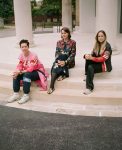
“Emergency Designer Network was created during lockdown when the NHS announced it was short on protective equipment. It was formed by four British designers, Phoebe English, Holly Fulton, Cozette McCreery and Bethany Williams, banding together to create protective clothing for key workers in our studios. It was the busiest and one of the most frustrating and yet rewarding times ever. It felt so good to be doing something and everyone who came on board was so supportive and upbeat that it helped to push us through. Remember that every single one of us from the delivery drivers (Matches Fashion, Yoox Net-A-Porter, Freight Brokers, White Cube) to the factory units, at home professional machinists, were all volunteering. And that it was a very positive moment for our industry; everything you want from a ‘brand’ at the moment: diversity, supporting, women-led etc. PRs got on board to find us funding or fabrics, fashion media promoted and fundraised, individuals donated, Commuknitty setup an Ebay jumper bidding war. It ignited something in so many of us. It was, and still is, a joy to be part of.”
Emergency Designer Network

“I shot this series of photographs in Los Angeles, one week before going into confinement in Europe. These photographs are the only documentation of four sculptures I’ve built together with set designer Heath Mattioli. Each sculpture was constructed out of recyclables and dismantled after being photographed. Looking back at this work from the current situation, I feel even stronger about the intention of this series. What became obvious was that our global economy is based on inessential goods. In times of crisis, you realise how little you need to get by. Or that what you need has no price. What I want to say with this sculpture is that worth is something very subjective and I think it is time for a shift in our behaviour as consumers. ‘New’ isn’t necessarily better. We have produced an abundance of materials; now it is essential to create with those, instead of continuing to make new materials harvesting more primary materials. We need to shift away from a linear to a circular economy. This project was produced by ERE, a collective of creatives working in the fashion industry. ERE unites and facilitates voices that demand and contribute to a more sustainable way of making fashion, focusing on rewilding and preserving our natural world. All profits go to selected NGOs. More info on www.ere.earth. The full series can be seen in Paris between 8 and 11 October in the Espace Sylvia Rielle, 10 Place des Vosges, Paris.”
Théo de Gueltzl, photographer and sculptor
